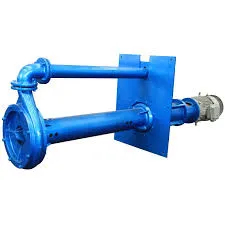Icelandic
- Afrikaans
- Albanian
- Amharic
- Arabic
- Armenian
- Azerbaijani
- Basque
- Belarusian
- Bengali
- Bosnian
- Bulgarian
- Catalan
- Cebuano
- Corsican
- Croatian
- Czech
- Danish
- Dutch
- English
- Esperanto
- Estonian
- Finnish
- French
- Frisian
- Galician
- Georgian
- German
- Greek
- Gujarati
- Haitian Creole
- hausa
- hawaiian
- Hebrew
- Hindi
- Miao
- Hungarian
- Icelandic
- igbo
- Indonesian
- irish
- Italian
- Japanese
- Javanese
- Kannada
- kazakh
- Khmer
- Rwandese
- Korean
- Kurdish
- Kyrgyz
- Lao
- Latin
- Latvian
- Lithuanian
- Luxembourgish
- Macedonian
- Malgashi
- Malay
- Malayalam
- Maltese
- Maori
- Marathi
- Mongolian
- Myanmar
- Nepali
- Norwegian
- Norwegian
- Occitan
- Pashto
- Persian
- Polish
- Portuguese
- Punjabi
- Romanian
- Russian
- Samoan
- Scottish Gaelic
- Serbian
- Sesotho
- Shona
- Sindhi
- Sinhala
- Slovak
- Slovenian
- Somali
- Spanish
- Sundanese
- Swahili
- Swedish
- Tagalog
- Tajik
- Tamil
- Tatar
- Telugu
- Thai
- Turkish
- Turkmen
- Ukrainian
- Urdu
- Uighur
- Uzbek
- Vietnamese
- Welsh
- Bantu
- Yiddish
- Yoruba
- Zulu
Telephone: +86 13120555503
Email: frank@cypump.com
ágú . 14, 2024 05:41 Back to list
Exploring the Essential Role of Well Service Pumps in Oil and Gas Industry Operations
Understanding Well Service Pumps Essential Tools for Oil and Gas Operations
In the ever-evolving oil and gas industry, well service pumps play a crucial role in maintaining and enhancing the productivity of oil wells. These specialized pumps are designed to handle high pressures and variable flows, making them indispensable for various well servicing tasks, including fracturing, acidizing, and well maintenance. This article will explore the significance, types, and applications of well service pumps.
The Importance of Well Service Pumps
Well service pumps are vital for the extraction and management of oil and gas resources. Their primary function is to convey fluids at high pressures, which is essential for several operations. For instance, during hydraulic fracturing, pumps are employed to inject a mixture of water, sand, and chemicals into the well at high pressures. This technique creates fractures in the rock formation, allowing hydrocarbons to flow more freely to the surface. Without the capacity to generate the necessary pressure, such operations would be ineffective, significantly affecting production rates.
Moreover, these pumps are also utilized in well cleanouts, where they assist in removing debris, sand, and other obstructions that could hinder oil flow. Regular well servicing, supported by efficient pump operations, ensures a longer lifespan for wells and maximizes return on investment for oil and gas companies.
Types of Well Service Pumps
There are several types of well service pumps, each suited for different applications and conditions. The most commonly used pumps include
1. Triplex Pumps These pumps feature three cylinders and deliver a consistent flow with high pressure, making them perfect for fracturing and cementing applications. Their design allows for reduced pulsation, providing smoother operation.
2. Quintuplex Pumps Similar to triplex pumps but with five cylinders, quintuplex pumps are known for their increased efficiency and lower maintenance requirements. They can deliver a higher flow rate while maintaining high pressure, ideal for demanding oilfield tasks.
3. Progressive Cavity Pumps These pumps use a helical rotor within a stationary cavity to move viscous fluids. They are commonly used in offshore operations and for handling crude oil that might have higher viscosity due to temperature and pressure conditions.
well service pump

4. Centrifugal Pumps While not typically classified under well service pumps, centrifugal pumps are prevalent in various applications for moving large volumes of fluids at lower pressures. They are frequently used for water management and fluid transfer operations.
Applications of Well Service Pumps
Well service pumps find application in various aspects of oil and gas extraction and well maintenance, including
- Hydraulic Fracturing A critical process involving the injection of fluids into the well to enhance hydrocarbon flow. Pumps ensure that the fluids reach the required depth at the necessary pressure.
- Acidizing This process involves the injecting of acid into the well to dissolve limestone or dolomite formations, enhancing permeability. Well service pumps are crucial for delivering the acid at the required pressure.
- Well Maintenance Routine well servicing often requires the removal of debris or sand buildup, for which high-pressure pumps are essential.
- Production Enhancement In older wells, pumps are used to rejuvenate production through various stimulation techniques, helping to extract remaining hydrocarbons more efficiently.
Conclusion
Well service pumps are an integral part of the oil and gas industry, providing essential support for operations that ensure optimal production levels. Understanding the types, functions, and applications of these pumps is crucial for professionals in the field. As technology continues to advance, the efficiency and capability of well service pumps will likely improve, driving further innovations in the industry. These pumps not only bring value to oil and gas endeavors but also play a significant role in sustaining energy demands across the globe.
-
ISG Series Vertical Pipeline Pump - Chi Yuan Pumps Co., LTD.|High Efficiency, Low Noise, Durable
NewsAug.02,2025
-
ISG Series Vertical Pipeline Pump - Chi Yuan Pumps | High Efficiency, Low Noise
NewsAug.02,2025
-
ISG Series Vertical Pipeline Pump- Chi Yuan Pumps Co., LTD.|High Efficiency&Compact Design
NewsAug.02,2025
-
Heavy-Duty Mining Sludge Pumps - Wear-Resistant Slurry Handling
NewsAug.02,2025
-
Horizontal Split Case Pump with GPT-4 Turbo | High Efficiency
NewsAug.01,2025
-
ISG Series Pipeline Pump - Chi Yuan Pumps | High Efficiency, Durable Design
NewsAug.01,2025










